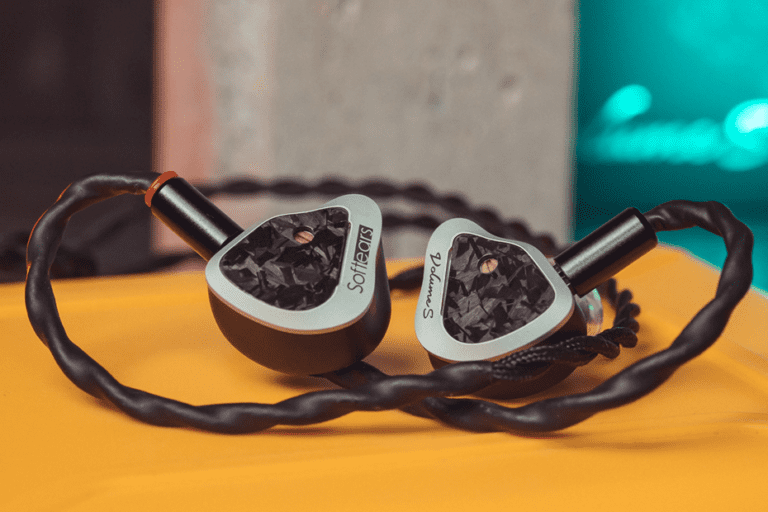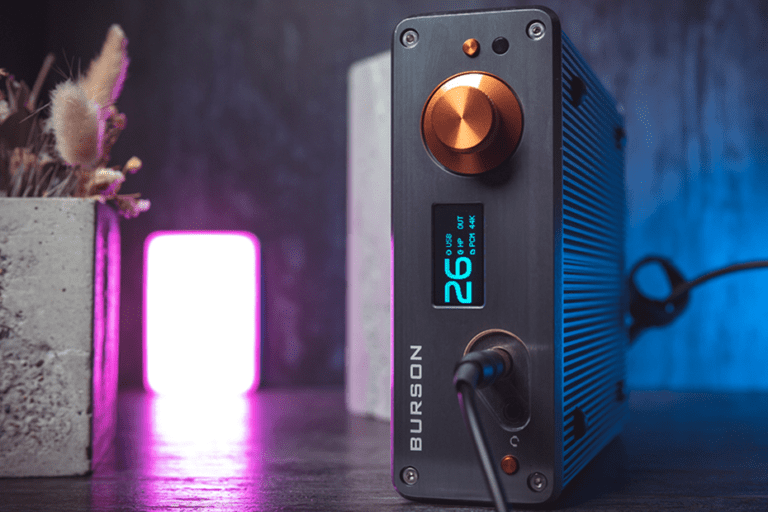
Burson Audio Playmate 3 Review 2025 – Great DAC/Amp Performance!
Hello, I’m Alexander, and today we are going to take a look at Burson Audio Playmate 3 desktop DAC and amplifier. This is the first product from Burson Audio that I’m reviewing on my channel and I’m quite excited to have it on my desk! Many thanks to the Burson Audio team for making this possible!
For those who don’t know, Burson Audio is an Australian audio equipment manufacturer based in Melbourne, and for more than 25 years they have been making high-performance headphone amplifiers, DACs, and integrated amplifiers, that deliver excellent sound quality, have a lot of power and look absolutely gorgeous! The company is also well-known for its discrete op-amps and modular designs that offer exceptional transparency and clean, audiophile-grade sound.
Burson Audio Playmate 3 comes in a large white carton box and there is branding and a model information on the front of the box.
In the box:
- Burson Audio Playmate 3 desktop DAC and amplifier
- A power supply
- 3 different power plugs that slide onto power supply
- USB Type C to type C cable
- RCA to RCA cable
- Headset splitter in case your headset has separate connectors for mic and headphones
- Allen wrench
- Additional OP amps for testing
- and a remote control (in case you ordered Deluxe version)
Design & build
Burson Audio Playmate 3 is the company’s entry level DAC/AMP, but it has the same DNA of their flagship models, so it delivers excellent performance and power, leaving a lot of the competition in this price bracket behind.
The Playmate 3 comes in two editions – the standard and Deluxe one. The unit in my review is a Deluxe edition. The standard edition comes at $599 while Deluxe Edition will set you back $999.

On the outside, there is no visual difference between two versions, but the Deluxe edition comes with V7 Vivid Pro op amps and SP02 power modules installed, Burson Super Charger 24V/3A PSU and a remote control.
The body of the unit is made from anodized aluminum, and it feels solid. The finish looks and feels great too. The length of the unit is 150 mm, the height is 55 mm, and the depth is 195 mm. The metal case gives it a sturdiness, ability to shield the device from external electromagnetic interference and as we have a class-A amplifier on board the whole case serves as a heat sink, which is a very clever idea.
Front and back panels
On the front of the unit there is a standby button, a tiny power indicator, 3.5mm headphone output that supports headsets with microphone, 6.3mm headphone output, a display, fantastic metal volume knob, a menu button and infrared remote window.
On the back of the unit there is a USB-C port, Toslink or optical input, RCA line outputs and a power socket.
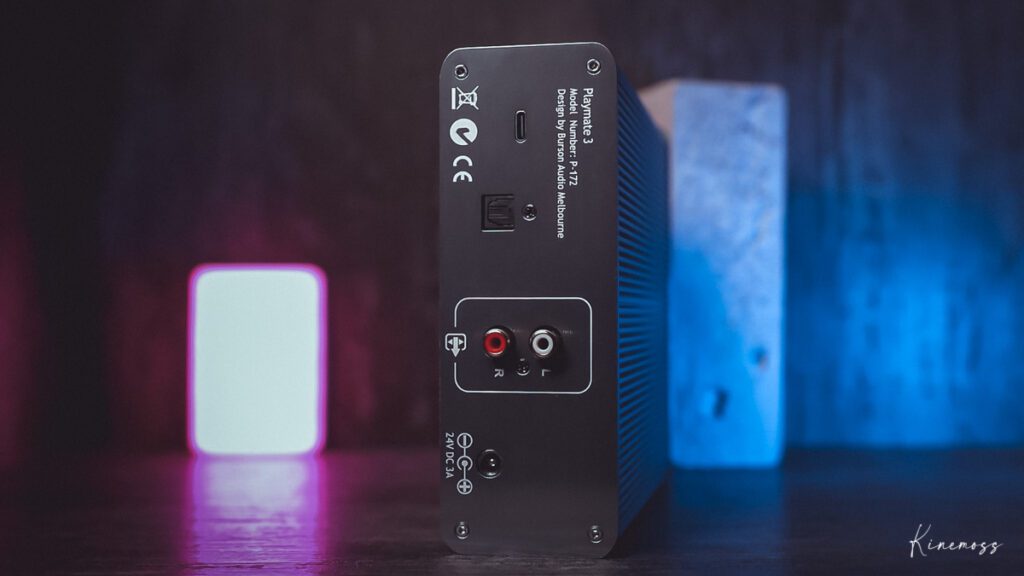
The top cover of the unit is precisely machined not only for aesthetic appeal but also to enhance its functionality and serve as an efficient heat sink. At the bottom of the unit, there are four rubber feet.
Overall, the Burson Audio Playmate 3 screams premium and I’m pleased with the build, clever product design, and choice of materials.
Remote control
The remote control that comes with Deluxe Edition is 105x21x11 mm and is made from aluminum too to match the overall Playmate aesthetics. It has a mute button, source selection button and volume control buttons.
The spacing between up and down volume buttons is increased and that’s a clever idea too. By the way the buttons are the same color as buttons and knobs on the unit itself and I love how the buttons click!
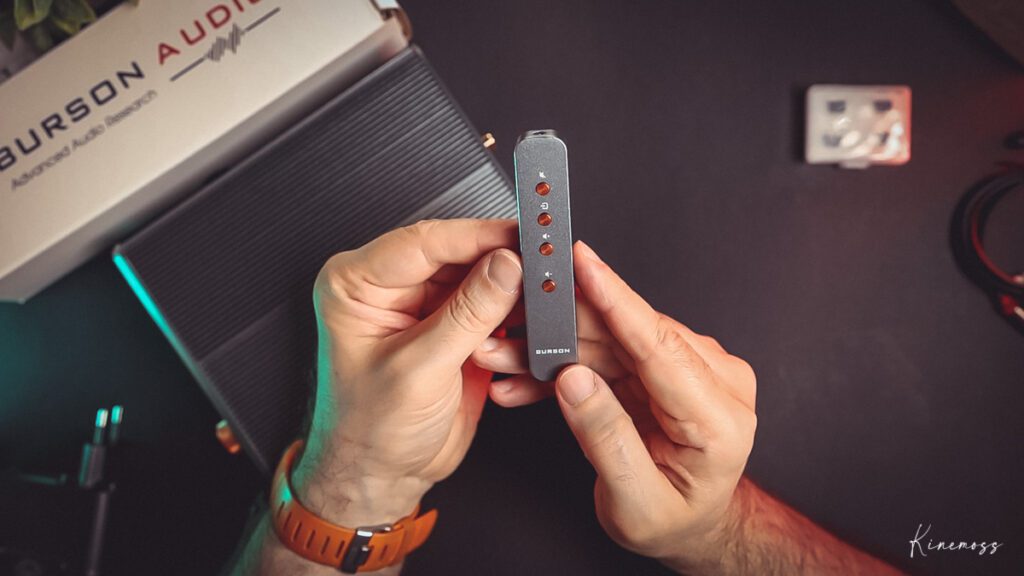
Burson Playmate 3 technical specifications
In case you need all detailed specifications, you can find it on the Burson Audio website, but to save you some time I’d like to highlight the most important ones.
First of all the modular configuration allows you to get the standard edition and upgrade it if you feel like it. To change the OP amps and power modules you need to use the supplied Allen wrench and unscrew top 2 hex screws on the front of the device and another two top screws on the back of the device. This will allow you to remove the cover and give you access to the PCB to replace both OP amps and power modules. But before you do so, please make sure the unit is switched off.
The DAC section of Playmate 3 is based on a single ES9039 DAC chip. It supports PCM decoding up to 768kHz at 32 bits, as well as Native DSD512 and the DAC chip is the same for both Standard and Deluxe editions.
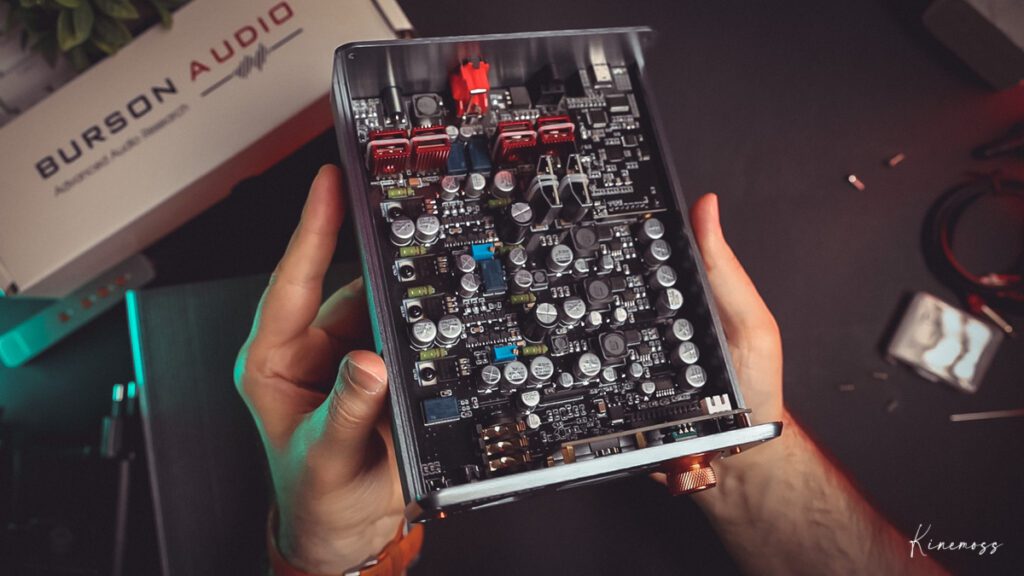
The amplifier section of Playmate 3 comes with NE5532 IC Op Amps in case of the standard edition or with V7 Vivid Pro op amps in case of Deluxe edition.
The power section is also different – the standard edition comes with SP01 power modules and a Standard 24V/3A PSU. Deluxe version comes with SP02 power modules and Burson Super Charger 3A 24V/3A PSU.
The device has both 3.5mm and 6.3 mm single-ended headphone outputs and provides 3.5 Watts Class-A power per channel at 16 Ohms. This is an impressive figure, and Playmate 3 will easily drive 95% of full size headphones currently present on the market.
Besides that the unit also has a line output that you can use to feed you active speakers or your external amplifier. And you also get an optical digital input so you can feed the digital signal to the unit from another music source. The output impedance for line out is 100 Ohms and the output impedance for headphone output is below 2 Ohms.
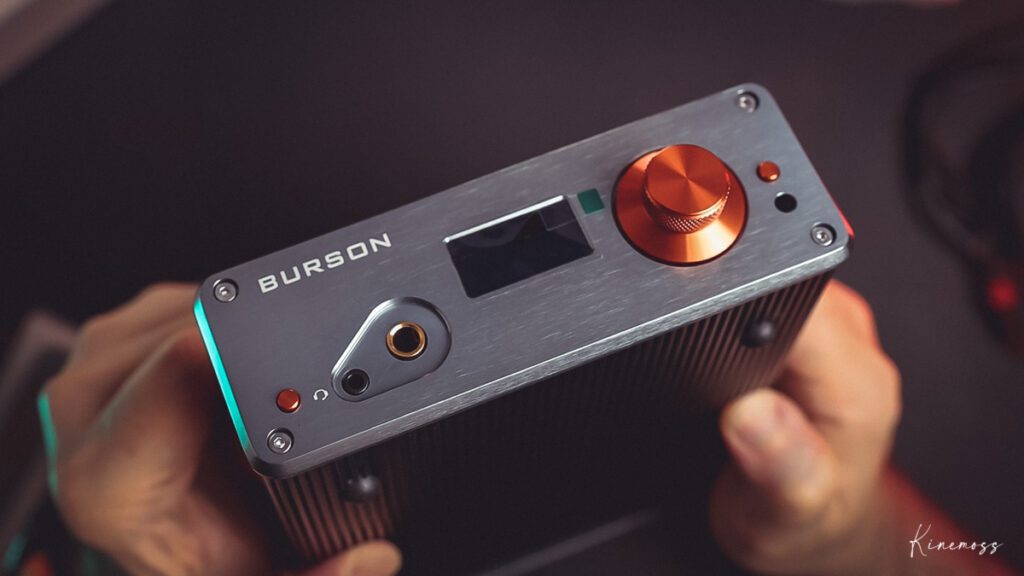
I was mainly testing Playmate 3 with my Windows-based machine, but it also worked great with my iPhone (via camera adapter) and my iBasso DX170 DAP. I used Roon for FLAC and DSD files and Tidal for lossless streaming.
Burson Playmate 3 functionality
Playmate 3 is a plug and play device, but I advice you to visit Burson Audio website and download the latest drivers first. By the way the user manual is also available at the same link.
When you switch the device on, the screen will show you the current volume, active input, device mode, file type and sampling rate. There are also some device options accessible via the menu system that I have not seen on other devices and that we will discuss later in this review.
The volume wheel is a digital one, it’s very smooth and it has no clicks. The volume wheel also has a secondary function and acts as a mute button when pressed. When the device is muted the volume indicator on the screen starts to blink. To unmute, just press the volume button once again.
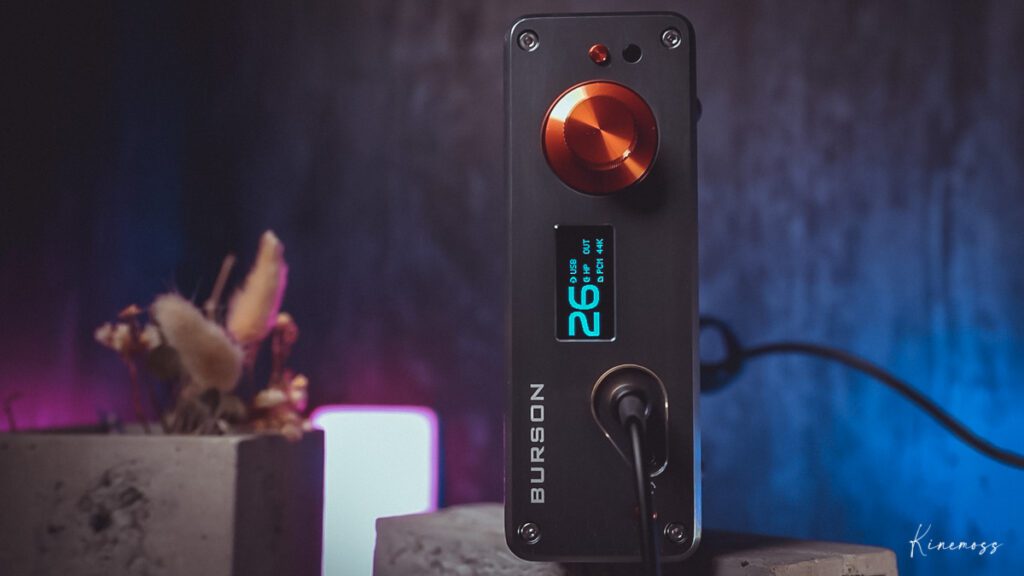
Menu system & parameters
The menu button takes you to the device menu. It’s not very extensive, but there are some interesting functions present that I didn’t see on other devices.
Input option allows you to switch between USB and Toslink input.
The outputs menu option allows you to choose how the output will operate. It can either be Headphones out, Pre-Out and DAC out. In DAC out mode the output volume is fixed so you can’t control it anymore with a volume knob.
Enjoying this review? Read more DAC/AMP reviews here
HP LVL function is simple and it allows you to switch between low and high gain modes.
FIRFILTER option allows you to select between 7 built in DAC filters
DPLL option allows you to set a jitter
IIR BW option allows you to change the IRR filter bandwidth setting.
DAC PATH option allows you to bypass filters in the DAC chain
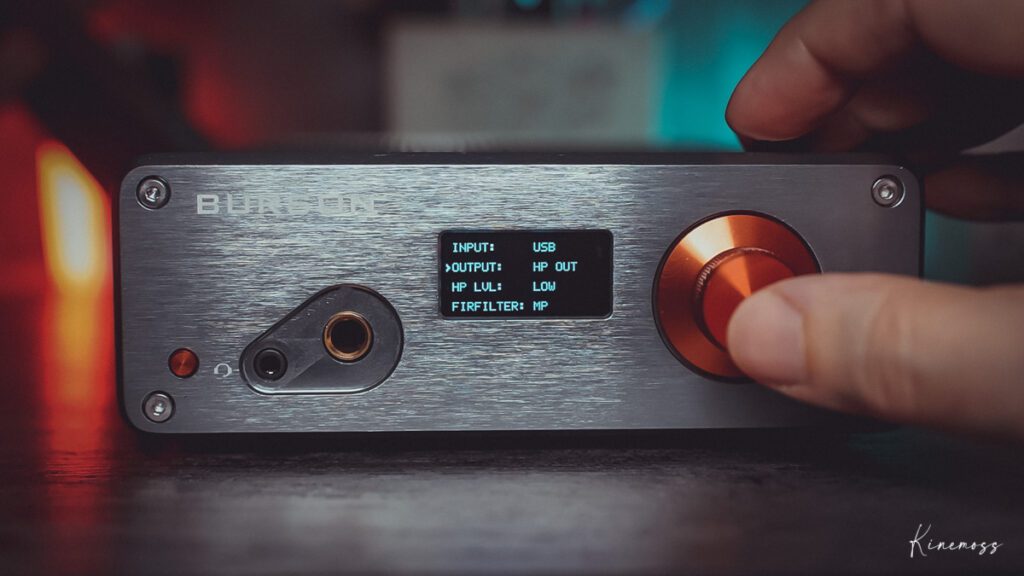
THD COMP is a THD compensation that is built in the DAC chip and you can either switch it off completely or choose between two modes of THD compensation.
RESET SET option resets the device to factory defaults.
AUTO OFF switches the device to standby mode after 20 minutes if no signal is detected. Taking into consideration we have the Class-A amplifier on board and the fact the device gets pretty warm, is a very useful function to have.
And the last option on the menu is a USB MIC off function which switches on and off the support for the headset microphone.
Overall, I liked the menu on Playmate 3. It’s clear, fast and easy to learn.
Burson Audio Playmate 3 pairings & sound impressions
Before we start, I need to mention that I don’t believe that DACs can have a significant impact on the sound. However, the amplifier section can introduce changes to the sound and hence it is way more important than a DAC chip in my books.
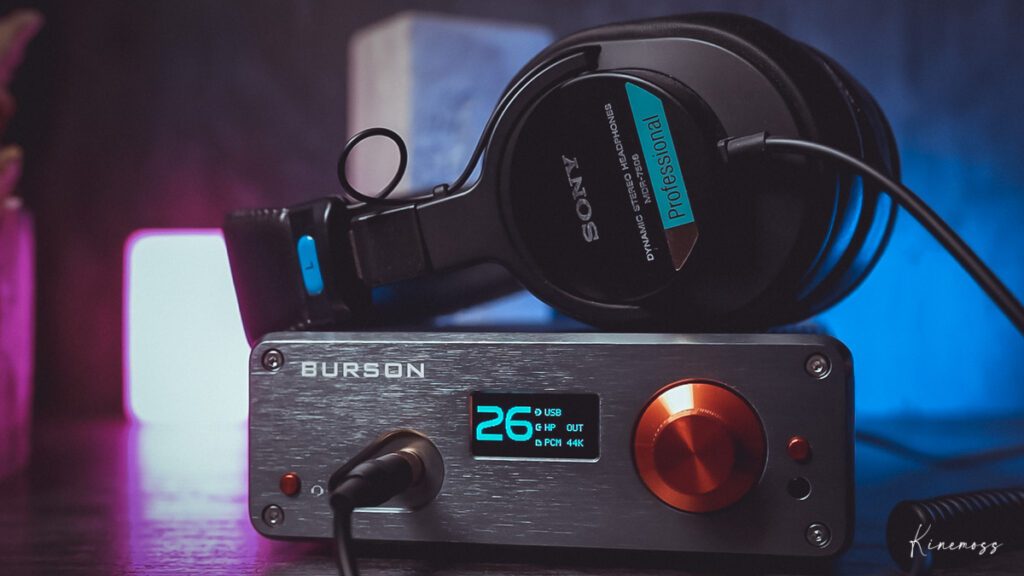
The Playmate 3 is a great example of what I just said as its Class-A amplifier is what leaves a lot of competition behind. Playmate 3 offers a full, punchy, exceptionally transparent and natural sound presentation and it made my headphones sound in ways I have never thought they could sound like.
Another point that I need to make here is I believe Playmate 3 was designed for full-size headphones, especially taking into consideration its amount of output power.
Of course you can use it with your IEMs too, but most likely in a low gain mode and you will still be limited on volume control range of motion, as in case of sensitive IEMs, 5 points of volume (out of 100) can already be way too loud.
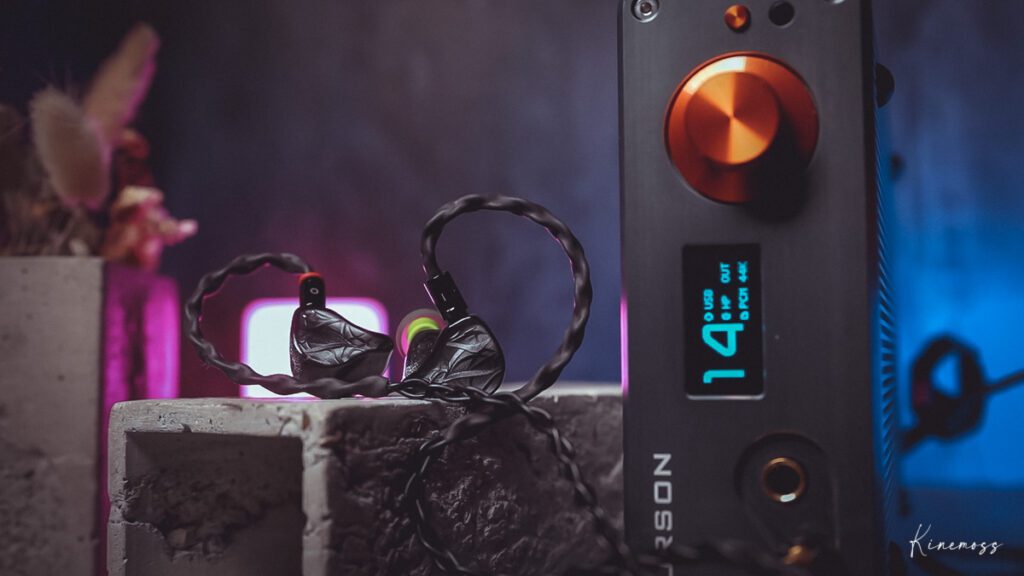
With all of my IEMs, I have run the unit exclusively in the low-gain mode and by the way, I also have headroom correction in Roon set at -6db. With sensitive IEMs I rarely increased the volume past 5 out of 100. Besides being limited in volume steps due to enormous output power, there was slightly noticeable hiss in the background with sensitive IEMs which becomes more audible if you switch to high-gain mode.
With the demanding and power hungry IEMs and quiet recordings, I rarely increased the volume past 25 out of 100 in the low gain mode. And even with headroom correction in Roon set at -6db I still had tons of headroom left.
The next important aspect was how it would drive my full-size headphones. I tried Playmate 3 with about 15 different full-size headphones I had at hand while making this review ranging from 16 to 300 Ohm. The full list of full-size headphones is below.
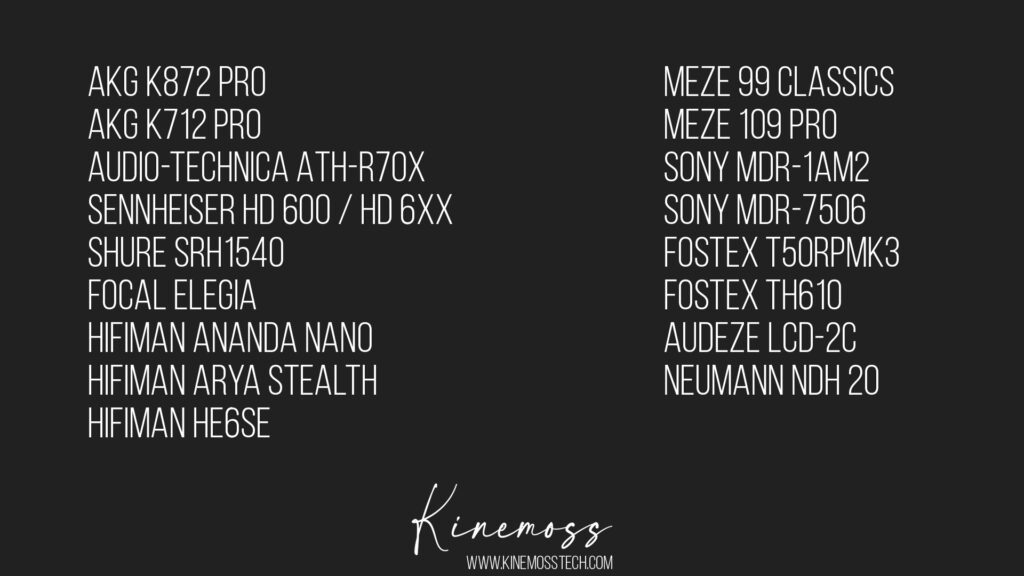
The Playmate 3 has driven all of my sensitive full size headphones in the low gain mode with authority. Testing the unit with some 150, 250 and 300 Ohm dynamic headphones as well as with the low sensitivity planar magnetic headphones required switching the unit to the high gain mode. But this still left me with plenty of headroom, despite my -6dB headroom correction in Roon and it was fantastic.
In the high gain mode, I rarely increased the volume past 40 out of 100, and I still had a lot of power at hand to drive my demanding headphones to absurd levels of volume. Which of course I don’t recommend you do.
Conclusions
Playmate 3 has shown fantastic results and has driven all the headphones in my tests with authority providing great dynamics, sound realism, lively presentation with a deep soundstage, excellent instrument separation and a fantastic detail retrieval.
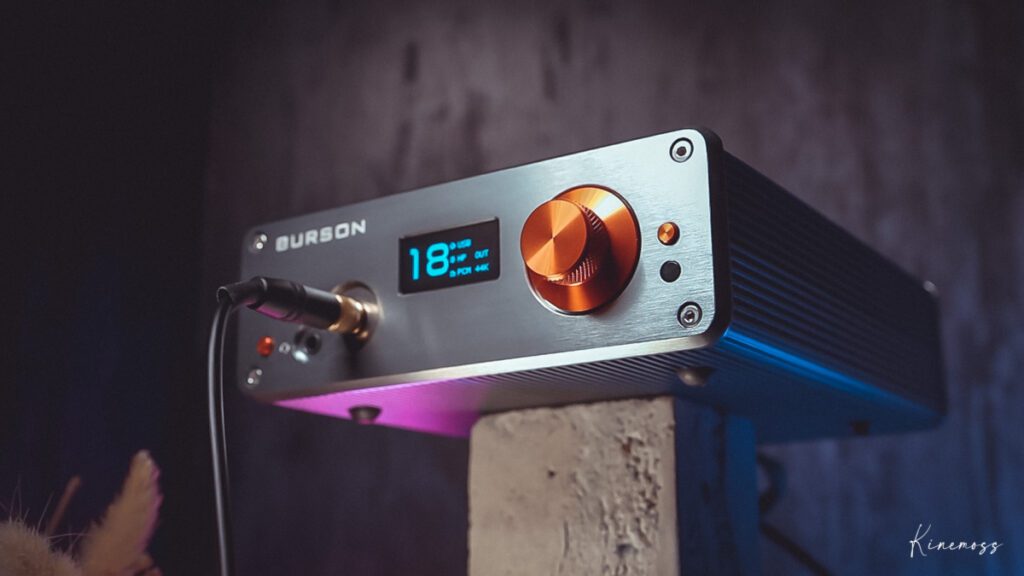
What I liked?
- Excellent schematics, design & build
- Fantastic Class-A amplifier performance
- Modular design that allows you to switch OP Amps and power modules
- Impressive single DAC chip implementation and performance
- Dynamic, transparent and lively sound presentation
- Two gain modes with a lot of output power
- 3.5mm and 6.35mm headphone outputs
- Headset support
- RCA line outputs with Pre-amp output modes
- Fantastic volume knob
- And a metal remote control that matches the unit aesthetics
What I didn’t like?
Well, I don’t think this unit has any real cons. Trust me, I tried to nit-pick, but I just couldn’t find any flaws.
The Playmate 3 stands out as a fantastic all-in-one solution, making it an ideal choice for those seeking the first advanced and well-built desktop DAC/AMP. It has an exceptional balance between price, build, modularity, performance and output power, and it’s easily a top-tier device in its category. Given its exceptional capabilities and outstanding value, I highly recommend it!
And that concludes my review for today. If you want to see more content like this, consider subscribing to my YouTube channel. Thank you for joining me, and until next time, goodbye!



